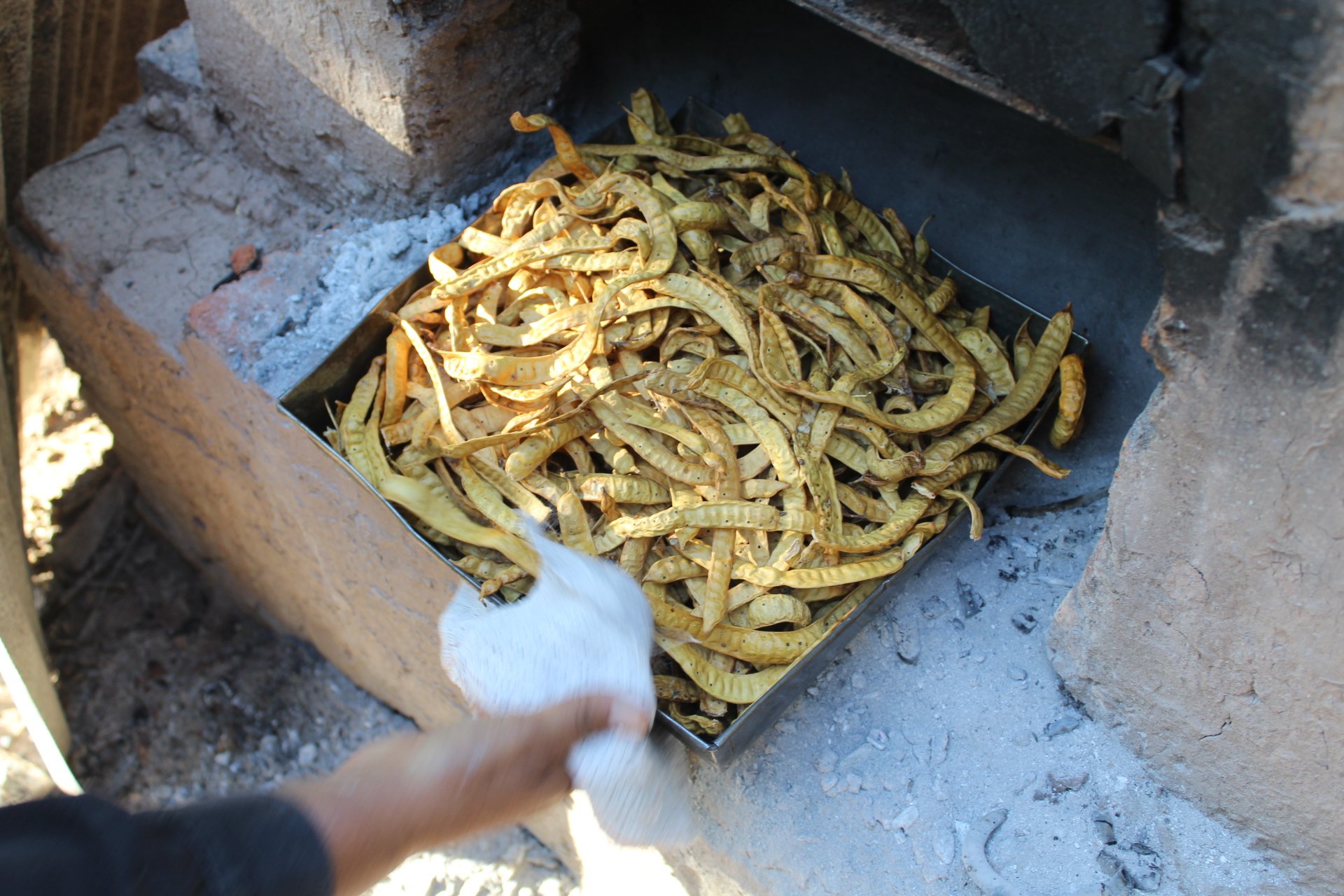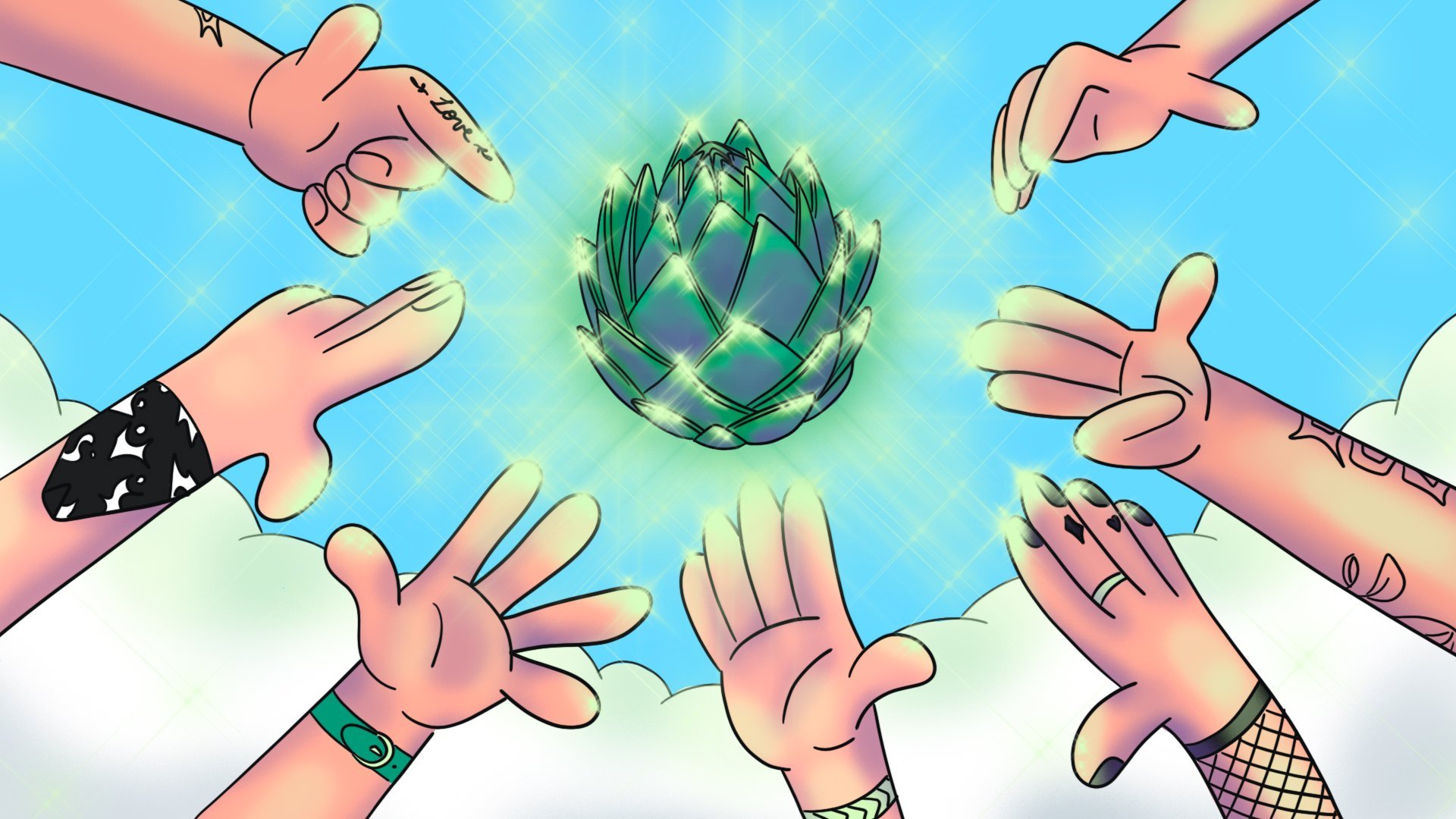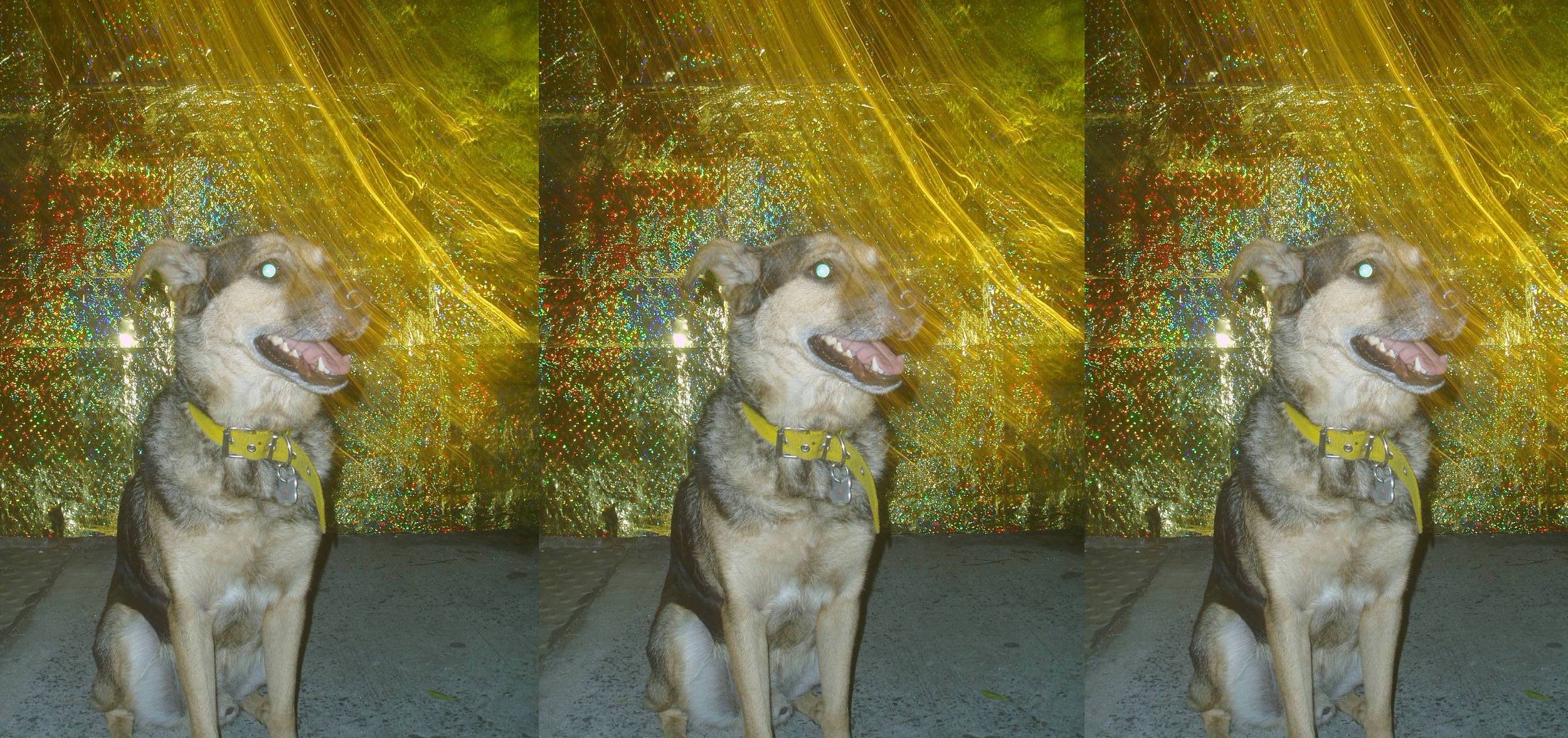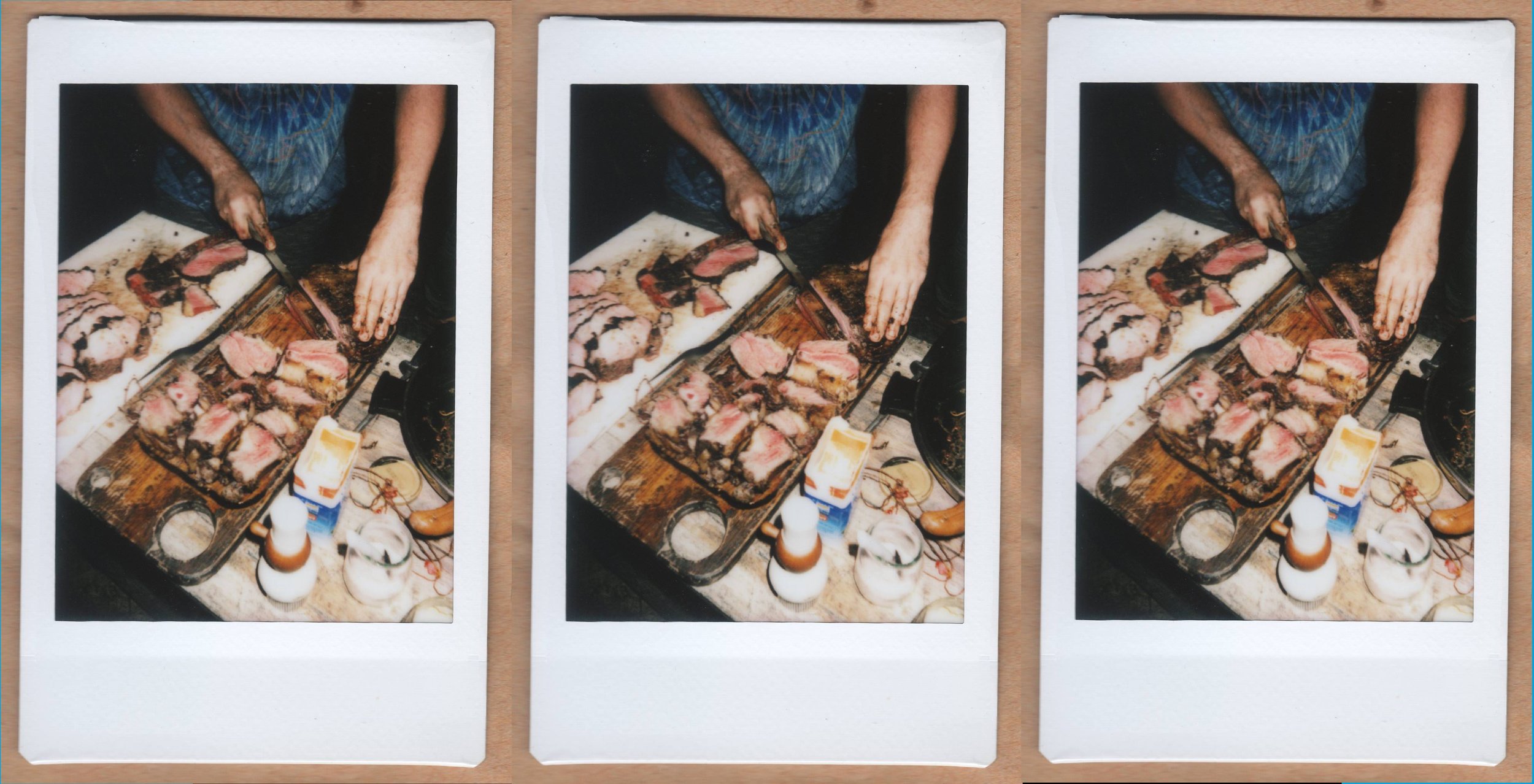Matambre Mag is a compilation of essays, interviews, art, photography and the occasional reported story about the food of Buenos Aires and Argentina and all that it encompasses: ecology, politics, economy, culture and history. Everything can be accessed for members via this page. If you are not already a paid subscriber, please consider giving Matambre your support.
Matambre Mag es una colección de entrevistas, arte, fotografía y relatos sobre la comida en Buenos Aires y Argentina y todo lo que abarca: ecología, política, economía, cultura e historia. Podrás acceder a todo el contenido antes mencionado mediante esta página. Si aún no estás suscripto, suscribite abajo.
The City’s Riptide / Una corriente arrasadora
The writer Roberto Arlt onces said that the calle Corrientes was Buenos Aires’ only street with a soul. Almost a century later, just how inmutable is the street’s spirit?
Una vez Roberto Arlt dijo que la calle Corrientes era la única calle porteña con alma. Casi un siglo después, ¿Qué queda de su esencia original?
The hitmens’ leader / El líder de los sicarios
On feasts and Nicola Costantino
Poet and art critic Zaira Nofal writes about her childhood pet, a goat named Vivi, family feasts, and the art of Nicola Costantino.
Sobre los banquetes y el arte de Nicola Costantino
La poeta y crítica de arte Zaira Nofal relata acerca de su mascota de niñez, un cabrito llamado Vivi, los banquetes y el arte de Nicola Costantino.
How Not to Get Lost in the Mercado Central / Cómo no perderse en el Mercado Central
On markets and the people inside them
I’ve always been curious to know why the average consumer chooses to cook with such a limited selection of fruits and vegetables despite living in a country with so much diversity of climate, soil, and communities. So I woke up at 2am and headed to the market, where I followed crates of Brussel sprouts, leeks, quince, and carrots, and several others, to their final preparations at different restaurants across Buenos Aires.
Sobre los mercados y las personas que los consideran su hogar
Siempre me generó curiosidad saber por qué son tan pocas las verduras y frutas que elegimos comer a diario a pesar de vivir en un país con tanta diversidad de climas, suelos, y comunidades. Así que madrugué y me fui por el mercado y seguí cajones de Bruselas, puerros, membrillos, zanahorias, y muchos productos más, hasta su preparación final en varios restaurantes porteños.
The Monster and the Canela / El monstruo y la canela
On natural wine and doomed romances
After Argentina's 2001 economic collapse, Santiago Salgado ditched the city and found a small patch of land in Mendoza, where he began a natural wine business and a doomed romance with a dying grape called canela.
Sobre el vino natural y un amor sin futuro
Después del corralito del 2001, Santiago Salgado y su familia se trasladaron a San Rafael, Mendoza, donde empezó un viñedo y un romance sin futuro con una uva en extinción: la canela.
What do the streets of Once have to say? / ¿Qué cuentan las calles de Once?
On my first year in el barrio Once
An essay about one of Buenos Aires’ most important food neighborhoods, a place everyone passes through but few really get to know.
Sobre mi primer año viviendo en el Once
Un ensayo sobre uno de los barrios gastronómicos más importantes de Buenos Aires, una zona que todos transitan pero muchos no entienden.
Overlooked modernism and empanadas in the middle of Downtown / Empanadas y modernismo desapercibido en pleno Microcentro
Downtown Buenos Aires’ calle Florida hides 17 galerías, cavernous shopping centers built into the middle of city blocks. As life in the galerías fade, we wonder what their futures hold.
La calle Florida esconde 17 galerías, grandes espacios comerciales que penetran las manzanas. Mientras sean cada vez menos frecuentados, ¿cuál será su futuro?
From Chaco to Patagonia: Drinking Aguardiente in Cipolletti / Del Chaco a la Patagonia: El aguardiente de Cipolletti
On small towns and culinary creativity
In collaboration with local shoe brand POSCO, a story about repurposing indigenous ingredients and a reluctant guide for eating, drinking, and running around orchards in northern Patagonia.
Sobre pueblos y la creatividad culinaria
En colaboración con POSCO, una historia sobre reutilizar ingredientes indígenas y un guía para comer, beber, y correr por los viñedos del Alto Valle.
Quebracho and Catastrophe / Quebracho y catástrofe
On wood and the asado cooked over it
From a tiny vantage point in one of the world's largest forests, the legacy of quebracho wood and the beef cooked over it. Both cultural identifiers — but for how much longer?
Sobre leña y la carne que se cocina sobre ella
Desde un parador en uno de los bosques más grandes del mundo: el legado del quebracho y la carne que se cocina sobre ella. Ambos forman parte de la identidad nacional — pero a qué costo?
The Sweet Story of the Gran Chaco’s Carob Trees / La dulce historia del algarrobo del Gran Chaco
On old recipes and carob trees
In collaboration with local shoe brand POSCO, a story about carob fruit and what old recipe books say about the home cooks of the past.
Sobre recetas viejas y algarrobo
En colaboración con POSCO, una historia sobre la algarroba y lo que los viejos recetarios dicen de los cocineros hogareños del pasado.
A TABLE FULL OF RAVIOLES / UNA MESA LLENA DE RAVIOLES
On 1985, cinema and dinner tables
In Argentine film, the family dining table acts as the stage where the dishes that are served and the ones that never arrive to the table create tension and empathy.
Sobre el año 1985, su cine y mesas familiares
En el cine argentino, la mesa familia actúa como un escenario y los platos que se sirven (y los que no llegan a la mesa) refuerzan tensión y empatía.
WHAT’S IN AN ARTICHOKE? / ¿PERO QUÉ ES UN ALCAUCIL?
The history of the artichoke in Argentina, a vegetable that sparks confusion and frustration with today’s home cooks, and the cooperative trying to bring it back.
La historia del alcaucil, una hortaliza que confunde y frustra cocineros argentinos, y un grupo de productores Platenses que apuestan para su revaloración en la cocina local.
A PLEA FOR MORE MOTE / EN FAVOR DE MÁS MOTE
On regional cuisine vs everything else
The separation of 'regional cuisine' as other to everything else and a plea for more attention to dishes that are defined by place.
Sobre comida regional v todo lo demás
La separación de comida regional y todo lo demás y un pedido a gritos para una revaloración de las comidas que definen un paisaje.
CHORIPÁN: THE PEOPLE’S SANDWICH / CHORIPÁN: EL SÁNGUCHE DEL PUEBLO
On Argentina’s definitive sandwich
The importance of food as a social symbol. What role does the choripán, Argentina’s definitive sandwich, play in the Peronist Movement, breaking down the status quo, and uniting the nation’s dissidents?
Sobre el gran sánguche argentino
La comida como un símbolo social. ¿Qué rol tiene el choripán, el gran sánguche argentino, dentro del Movimiento Peronista? ¿Cómo rompe el automatismo? ¿Cómo une a los disidentes?
RAÚL & THE LITTLE PEACH / RAÚL & LOS PEQUEÑOS DURAZNOS
An essay about mourning, which has taken a hold of me this year, and how I am learning to give loss a giant bear hug.
Un ensayo sobre el duelo, que me ha agarrado fuerte este año, y aprender a abrazarlo.
CUAJADA, HEAT AND LEMON / CUAJADA, CALOR Y LIMÓN
On the Arabic culinary influence in the Argentine Northwest
In the Andean city of San Miguel de Tucumán, the history and evolution of food from the Syrian Lebanese region of the Arab world and its convergence with food native to the Argentine Northwest.
Sobre el legado culinario árabe del NOA
Desde San Miguel de Tucumán, la historia y evolución de la comida Siria y Libanés y su mezcla con la comida originaría del NOA.
EVERYTHING CHANGES AND EVERYTHING STAYS THE SAME / TODO CAMBIA Y TODO SIGUE IGUAL
An essay about the Gran Chaco, evolutionary psychology and the film collaboration between Alain Resnais and neurobiologist and philosopher Henri Laborit, My American Uncle.
Un ensayo sobre el Gran Chaco, psicología evolutiva y la colaboración cinematica de Alain Resnais y el neurobiologo Henri Laborit, Mi tío de América.
TOO CLOSE TO THE FIRE / DEMASIADO CERCA DEL FUEGO
An essay about how straight men behave when we gather around a fire.
Un ensayo sobre cómo los varones heteros nos comportamos alrededor de un fuego.
NOTES ON CULINARY LOVERS & ANTHONY BOURDAIN / NOTAS SOBRE AMORES CULINARIOS & ANTHONY BOURDAIN
Oli Najt writes about her relationship with food which often time sits somewhere between pleasure and pain.
Oli Najt escribe sobre su relación con la comida - muchas veces entre el placer y el dolor.
GOODBYE, JULIO / ADIOS, JULIO
A tale of two cities and the story of Lo de Julio, the first place that made me feel like I belonged here.
Un cuento sobre dos ciudades y la historia de Lo de Julio, el primer lugar que me hizo sentir que pertenecía acá.
THE FLAVOR OF WHAT DOESN’T EXIST / EL SABOR DE LO QUE NO EXISTE
A story about the town that writer Lucía Cholakian Herrera’s great-grandparents were forced to leave behind nearly 100 years ago. Is possible for a flavor to keep alive a place that no longer exists?
Una historia sobre el pueblo que los bisabuelos de Lucía Cholakian Herrera se tuvieron que desterrar 100 años atrás. ¿Un sabor puede mantener vivo un lugar que ya no existe?
ALBERTO GRECO AND THE ART OF LIVING IN THE ‘IN-BETWEEN’ / ALBERTO GRECO Y EL ARTE DE VIVIR EN EL ‘ENTRE’
Reflections about the radical life and art of Alberto Greco, who proclaimed that painting was dead and created his own art movement. What can be learned from leaving the past in the past and creating the future today?
Reflexiones sobre la vida y el arte radical de Alberto Greco, quien proclamó que la pintura estaba muerta y creó su propio movimiento artístico. ¿Qué se puede aprender de dejar el pasado en el pasado y crear el futuro hoy?
GUT FEELING / UN SENTIMIENTO ENTRAÑADO
A story about the contradictions of our appetites and the ways that violence and joy, fragility and grotesque, popular and polarizing all live on the same plate.
Un ensayo sobre un amor incondicional por los chinchulines y las contradicciones de nuestros apetitos. Como la violencia y la alegría, la fragilidad y lo grotesco, lo popular y lo divisorio conviven en el mismo plato.
WHAT SHOULD THE FUTURE OF TRAVEL JOURNALISM LOOK LIKE? / ¿CÓMO DEBERÍA SER EL FUTURO DEL PERIODISMO TURÍSTICO?
On the work it takes to travel genuinely, the Netflix docuseries High on the Hog and the importance of travel and travel media reconditioning travelers to understand travel as a circular exchange.
Parte II de una serie continua.
Sobre el trabajo que conlleva viajar de forma genuina, la serie documental de Netflix "A pedir de boca" y lo importante que es que el turismo y los medios de turismo ayuden a los viajeros a pensar el viaje como un intercambio circular.
WHAT SHOULD THE FUTURE OF TRAVEL JOURNALISM LOOK LIKE? / ¿CÓMO DEBERÍA SER EL FUTURO DEL PERIODISMO TURÍSTICO?
On the monochrome future of Jacques Tati’s “Playtime”, editing foreign spaces and the ways that travel journalism obscures and colonizes the other.
Parte I de una serie continua.
Sobre el futuro monocromático de “Playtime” de Jacques Tati, editar espacios extranjeros y cómo el periodismo turístico coloniza el otro.
THE IRONY OF TRAVEL TO PRESERVE CULTURE / LA IRONÍA DE VIAJAR PARA PRESERVAR LA CULTURA
On re-imagining the responsibility of travel
How tourism that commercializes pre-hispanic culture contributes to the gradual loss of the culture we are meant to be celebrating.
Replantear la responsabilidad del turista
Como el turismo que comercializa la cultura prehispánica contribuye a la pérdida gradual del patrimonio que aquel turismo dice celebrar.
GO VISIT A FARM, Y’ALL / VAYA A VISITAR UNA FINCA, MI GENTE
On the radical act of knowing where your food comes from.
A story about meeting the people who grow my food, the complicated food system we’ve built for ourselves and the need for a simpler, more humane way of eating.
Sobre el acto radical de conocer el lugar donde crece tu comida.
La historia del día que fui a conocer la gente que proviene mis vegetales, nuestro sistema alimentario complicado y la necesidad de construir otra manera de consumir más simple y humana.
INSIDE THE ROTTED MIND OF A SOCIAL MEDIA HYPE-SEEKER / LA CABEZA PODRIDA DE UN TIPO OBSESIONADO CON LAS REDES
On the pressures of developing a social media presence.
The confusing parallel realities of online and offline life and the way that social media blurs the lines between valuable work and hype.
Sobre la presión de desarrollar una presencia en las redes sociales.
Las realidades paralelas entre la vida real y virtual y cómo las redes sociales confunden la linea entre el trabajo valoroso y el hype.
8 ARTICLES TO READ ABOUT FOOD FROM ACROSS THE AMERICAS / 8 NOTAS PARA LEER SOBRE COMIDA DE TODO EL CONTINENTE
If food is political so is the way we write about it.
Eight pieces from across the continent that embrace the nuances of storytelling, including the impending synthetic meat market of the Southern Cone, the real story behind the mojito, the intersection of indigenous and settler food cultures and the inherent patriarchy of community soup kitchens.
Si la comida es política también lo es la manera en que escribimos de ella.
Ocho notas de todo el continente que abrazan las sutilezas de la narración, incluye una investigación sobre el emergente mercado de carne sintética en el Cono Sur, la historia real del mojito, la intersección de las comidas de poblaciones indígenas y colonizadores y el patriarcado detrás de las ollas comunitarias.
ROOTING THE FUTURE IN THE SOIL OF TODAY / ENRAIZAR EL FUTURO EN EL SUELO DE HOY
In collaboration with the freshmen edition of Anchoa magazine.
The history of agriculture in Argentina since colonization to today, how authoritarianism welcomes environmental destruction and the future of regenerative agriculture.
Una colaboración con la primera edición de la revista Anchoa.
La historia de la agricultura argentina desde los tiempos de la colonización hasta el presente, cómo el autoritarismo abren la puerta a la destrucción ambiental y el futuro de la agricultura regenerativa.
DUCK MAGRET IN THE MIDDLE OF A MAYAN JUNGLE / MAGRET DE PATO EN EL MEDIO DE UNA SELVA MAYA
On the difference between bad tourism and good travel.
A story about being flown across the continent to speak at a food conference and observing, as I was shuttled around a curated list of places appropriate for a white gringo, what it meant to be a bad tourist.
Sobre la diferencia entre el mal turista y el buen viajero.
La historia de un viaje a Centroamérica como invitado a una conferencia gastronómica y observar, mientras me escoltaban a lugares aptos para un gringo blanco, la diferencia entre un mal turista y un buen viajero.
THE LISTS ARE NOT ENOUGH: LET’S WRITE A BETTER FOOD FUTURE / LOS LISTADOS YA NO SON SUFICIENTES: ESCRIBAMOS UN MEJOR FUTURO GASTRONÓMICO
On the responsibility of the food writer to create more equitable systems.
This week, allegations of sexual abuse in Buenos Aires restaurants exploded across social media and quickly appeared in the mainstream food media. Will this be a moment of introspection or will food media continue to support the conditions that create abusive work environments?
Sobre la responsabilidad del periodista gastronómico de apoyar sistemas más equitativos.
Esta semana salieron denuncias de agresión sexual dentro de los restaurantes porteños y los redes sociales explotaron y los medios tradicionales rápidamente se unieron al discurso. ¿Será el momento que los medios culinarios empiezan a analizar la forma en que la cobertura legitimiza a explotadores?
WHY IS SO HARD TO SOURCE ETHICALLY? ¿POR QUÉ ES TAN DIFÍCIL PROVEER INGREDIENTES ÉTICAMENTE?
Last week, I returned to a professional kitchen after putting my pop-up on hold for the pandemic. Returning with a new intention to go fully ‘sustainable’ was a lot harder than I expected.
La semana pasada volví a una cocina profesional después de casi un año. Volver con la intención de armar una carta cada vez más ‘sostenible’ era mucho más difícil de lo que me imaginaba.
IMAGING THE POST COVID KITCHEN / lMAGINEMOS LA COCINA POS PANDÉMICA.
Conversations with the restaurant workers of Buenos Aires.
Breaking the investor-backed restaurant group model, moving towards sustainable practices, building workplaces that prioritize workers and other ruminations from the people on the ground.
Conversaciones con los trabajadores gastro de Buenos Aires.
Romper el modelo gastronómico corporativo, acercarse a procesos más sostenibles, construir espacios laborales que priorizan el trabajador y otras reflexiones desde la base.
EYAL WEINTRAUB / ENVIRONMENTAL ACTIVIST - ACTIVISTA ECOLÓGICO
FRANK TREJO - ARTIST / ARTISTA
KENYA AMA - BAKER / PANADERA
HOW DO WE TALK ABOUT THIS? ¿CÓMO HABLAMOS DE ESO?
FANZINE #4: WHAT IS A RECIPE? / ¿QUÉ ES UNA RECETA?
OCTOBER / OCTUBRE
PANZE CASTAÑO & YOLED HERNÁNDEZ
ERIK MEJIA
MANUEL FERNÁNDEZ
1 - OCTOBER / OCTUBRE 2020
FANZINE #3: PRESERVATION / CONSERVACIÓN
SEPTEMBER / SEPTIEMBRE
ANALIA GONZÁLEZ
17 - SEPTEMBER / SEPTIEMBRE 2020
JOSÉ EIZAGA
10 - SEPTEMBER / SEPTIEMBRE 2020
SANTI FIGUEROA
3 - SEPTEMBER / SEPTIEMBRE 2020
FANZINE #2: THINGS WE TELL • LAS COSAS QUE CONTAMOS
AUGUST • AGOSTO
CECILIA GÁRGANO
JAKE EICHENBAUM-PIKSER
13 - AUGUST / AGOSTO 2020
CHARLIE ZAVALIA
FANZINE #1: POWER • PODER
JULY • JULIO
Una entrevista con una chef en busca de su identidad, un reportaje sobre un grupo de trabajadoras que se exigieron la igualdad y un ensayo sobre la construcción como una destrucción.
MARIO AMADO
23 - JULY / JULIO 2020























































